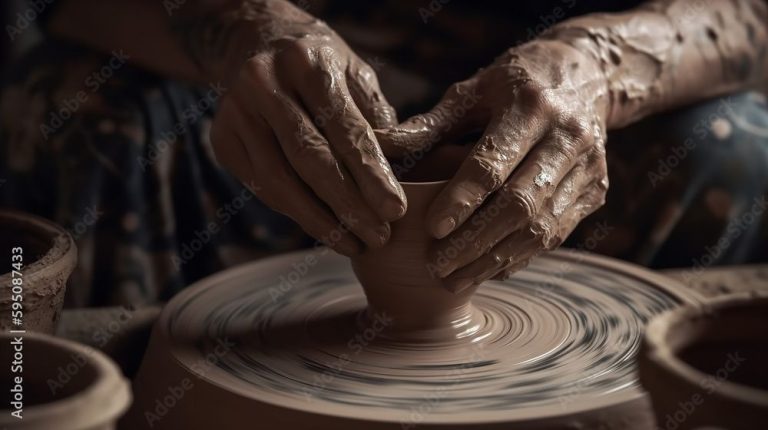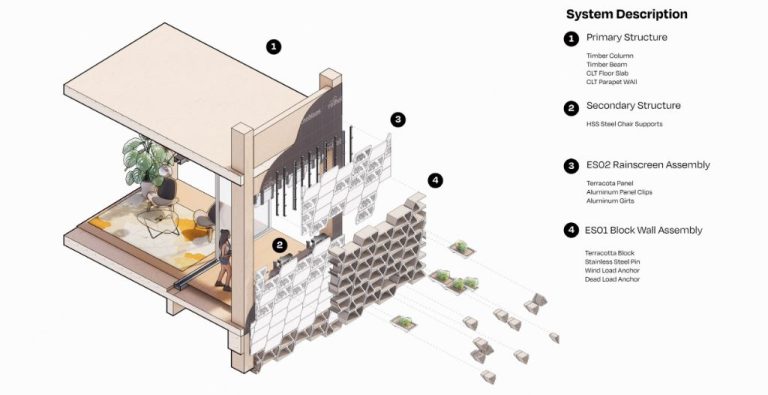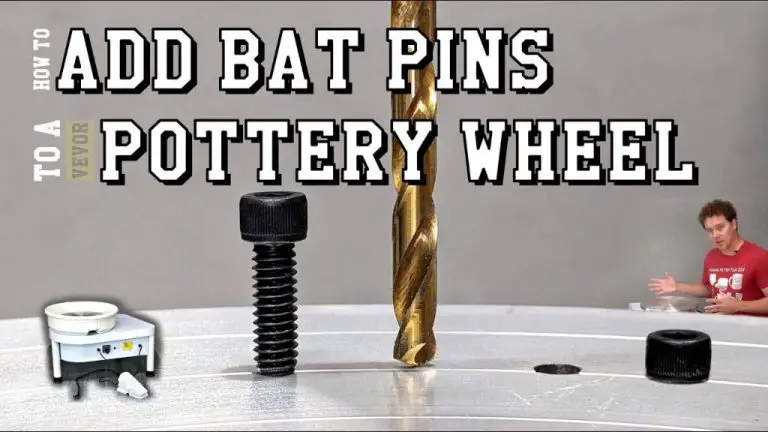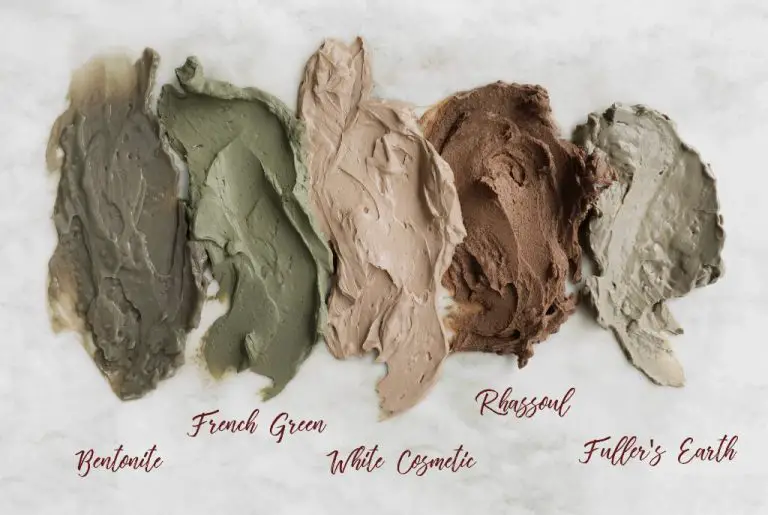How Do You Put A Drain Hole In A Clay Pot?
Putting drainage holes in clay pots is an important step before using them for plants. Adding holes allows excess water to drain out of the bottom of the pot, preventing root rot, mold growth, and other problems caused by overwatering. Drainage holes allow oxygen to get to the roots and help the soil dry out between waterings. This improves overall plant health and growth. Proper drainage is key for growing healthy houseplants and outdoor potted plants in clay containers.
Holes also give the roots room to grow and spread out. Without drainage, roots stay confined in wet soil and cannot access oxygen. By drilling holes in clay pots, you allow the roots to breathe and provide the ideal environment for plants to thrive.
Creating holes is a simple process that can be done with basic tools. The key steps include marking hole locations, drilling pilot holes, drilling the main holes, and smoothing any rough edges. This guide will walk through the full process for successfully adding drainage to clay plant pots of any size. Proper drainage helps prevent common problems and supports healthy roots and lush, vibrant plants.
Gather Materials
Before you begin drilling your clay pot, make sure you have gathered all the necessary materials:
-
Ceramic drill bits – You’ll need a set of drill bits made specifically for drilling through ceramic and clay. Standard twist drill bits for drilling metal or wood won’t work well and may damage the pot.
-
Spray bottle filled with water – The water will help keep the drill bit cool and minimize cracking as you drill through the clay.
-
Towel – Use a towel underneath the pot to prevent scratching and sliding while drilling.
-
Plastic tub or drop cloth – Protect your floors or workspace with a plastic tub or drop cloth to catch water drips and clay debris.
Select Location
When selecting where to put the drainage hole on your clay pot, it’s best to place it near the bottom on the side of the pot. This allows excess water to easily drain out to prevent root rot, and also keeps the aesthetics of the pot intact since the hole is discreetly located.
Position the hole about 2-3 inches up from the base of the pot. Make sure to pick a part of the pot’s sidewall that is relatively flat and uniform in thickness – this will make drilling easier. Avoid drilling near the bottom rim of the pot where it may be thinner and more prone to cracking.
Mark the drilling spot with a pencil so you know exactly where to place the drill bit. Some people also like putting tape over the area for extra protection. Just be sure to locate the hole low enough so water has a clear path to drain out, but high enough that it won’t weaken the pot’s structural integrity.
Prepare Workspace
Before drilling, prepare your workspace for the messy job. Place your clay pot on a sturdy, flat surface that allows ample room to work. Cover the surface with a plastic tub or drop cloth to collect water and clay dust. Consider working outside on a patio or deck if the weather allows. Wear an apron to protect your clothing from splatters.
Clear the area of any items that could get in the way or damaged by the drilling process. Have a damp rag or sponge handy to wipe up excess water or clay as you work. A vacuum with a hose and brush attachment can help clean small debris.
Position a bucket or tray under the pot to catch the runoff when you drill the hole. Protect surfaces like floors or countertops from scratches with a towel or cardboard. With your workspace prepped, you’ll be ready to start drilling into the clay pot.
Drill Pilot Hole
Before drilling the full-sized drainage hole, it’s best to first drill a smaller pilot hole. This serves as a guide and makes it easier to drill the larger hole accurately. Here are the steps:
- Select a drill bit that’s around 1/4th the diameter of your desired finished hole size. For example, for a 1/2 inch drainage hole, use a 1/8 inch drill bit.
- Mark the spot where you want the hole using a pencil.
- Place the point of the small drill bit on the mark.
- Drill slowly and carefully through the clay, perpendicular to the surface.
- Drill just deep enough to create a guide indentation, without going all the way through.
- This pilot hole will now serve as a guide for drilling the full-sized drainage hole.
Drill Drainage Hole
Once you’ve drilled a pilot hole, you’re ready to drill the full drainage hole. For this step, switch to a larger ceramic drill bit that’s approximately the size you want for the final hole. A typical drainage hole is around 1/4″ to 1/2″ in diameter.
Go slow and apply gentle, even pressure as you drill. Let the drill do the work – don’t force it. Ceramic drill bits can chip or break if too much pressure is applied. Drill straight down, keeping the drill as perpendicular to the pot surface as possible for neat, clean holes.
Pause regularly to clear away any debris and allow the bit and pot to cool. Drilling generates heat that can cause cracking if the pot gets too hot. Ceramic pots conduct heat poorly, so frequent breaks help dissipate heat.
Keep drilling until you penetrate fully through the pot wall. Apply pressure primarily on the downstroke to avoid chipping the exterior wall surface. Pierce through the interior wall surface last.
Smooth Rough Edges
After drilling the drainage hole, you’ll likely have some rough, uneven edges around the hole. It’s important to smooth out these edges to prevent injury when handling the pot and improve drainage. Here are some options for smoothing the edges:
Sandpaper – Start with a coarse grit sandpaper like 60-80 grit to remove the bulk of the roughness. Then use progressively finer grits like 120 and 220 to polish the edges smooth. Wrap the sandpaper around a wooden block for easier handling.
Metal file – A flat, smooth metal file can quickly smooth down rough spots and burs. Work in long, even strokes applying moderate pressure. Be sure to clean out any clay debris so the file remains effective.
Grinder – An electric grinder with a sanding drum or wheel attachment can make short work of smoothing drainage holes. Use gentle pressure and keep the grinder moving constantly to avoid digging into the clay. A Dremel rotary tool with a sanding band can also work on small pots.
Test the area around the drainage hole with your fingers to ensure any sharpness is removed. The hole perimeter should feel smooth to the touch when complete. Take care not to enlarge the hole unnecessarily while smoothing the edges.
Clean Up
After drilling the drain hole, it’s important to thoroughly clean the pot to remove any remaining clay dust or debris. Here are the steps for cleaning up after drilling:
Fill the pot with water to hydrate any clay dust residue from drilling. The water will help turn the dust into a muddy consistency that’s easier to remove.
Use a towel or soft cloth to wipe out excess water and loose clay from the pot. Remove as much of the damp clay dust as possible by wiping the interior surfaces.
Use a scrub brush and additional water to scrub any remaining clay residue. Scrub the inside walls and base of the pot, as well as the outside area around the drain hole.
Rinse away all scrubbed debris with clean water. Continue rinsing until the water runs clear.
Turn the pot upside down and allow it to air dry completely before using. Clay takes time to fully dry, so be patient. The pot should now have a cleanly drilled drain hole, free of any debris.
Test Drainage
After drilling the drainage hole, it’s important to test that water can flow through the hole properly. This allows you to identify any issues and make adjustments before potting plants.
To test the drainage:
- Fill the clay pot with water, leaving 1-2 inches from the rim empty.
- Let the water sit for 5-10 minutes so it fully saturates the clay.
- Pour the water out of the pot, observing the flow through the drainage hole.
- If the water drains slowly or becomes clogged, use a drill bit, file, or sandpaper to gently smooth and widen the hole.
- Repeat filling the pot with water and pouring it out until you achieve good drainage.
The drainage hole is working properly when water pours smoothly out of the pot. If needed, make any final adjustments so water does not pool or clog when drainage testing. Now the pot is ready for a plant!
Conclusion
Adding a drainage hole to your clay pot ensures excess water can flow out, preventing root rot and helping your plants thrive. By following the simple steps outlined here of gathering the right tools, carefully selecting the drainage hole location, drilling a pilot hole before gradually enlarging it with a ceramic drill bit, smoothing any rough edges, and cleaning up, you can successfully add a drainage hole to your clay pots. Testing the drainage after by pouring water through the pot confirms proper drainage has been achieved. With the drainage hole in place, you can confidently pot your plants knowing the roots will receive adequate air flow and not sit in saturated soil.




